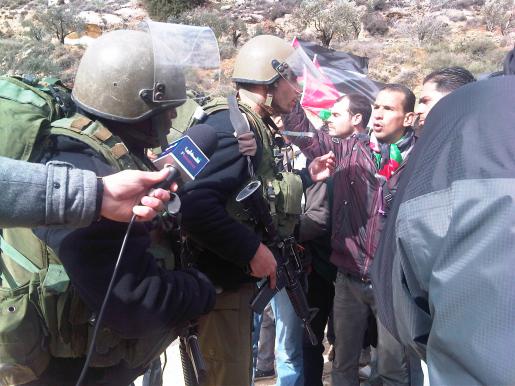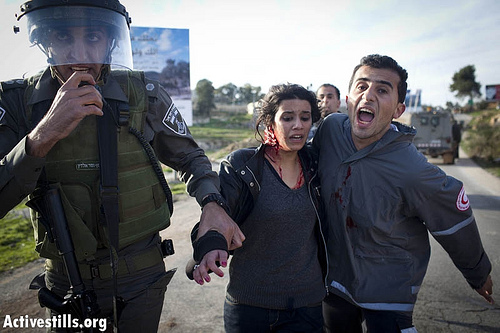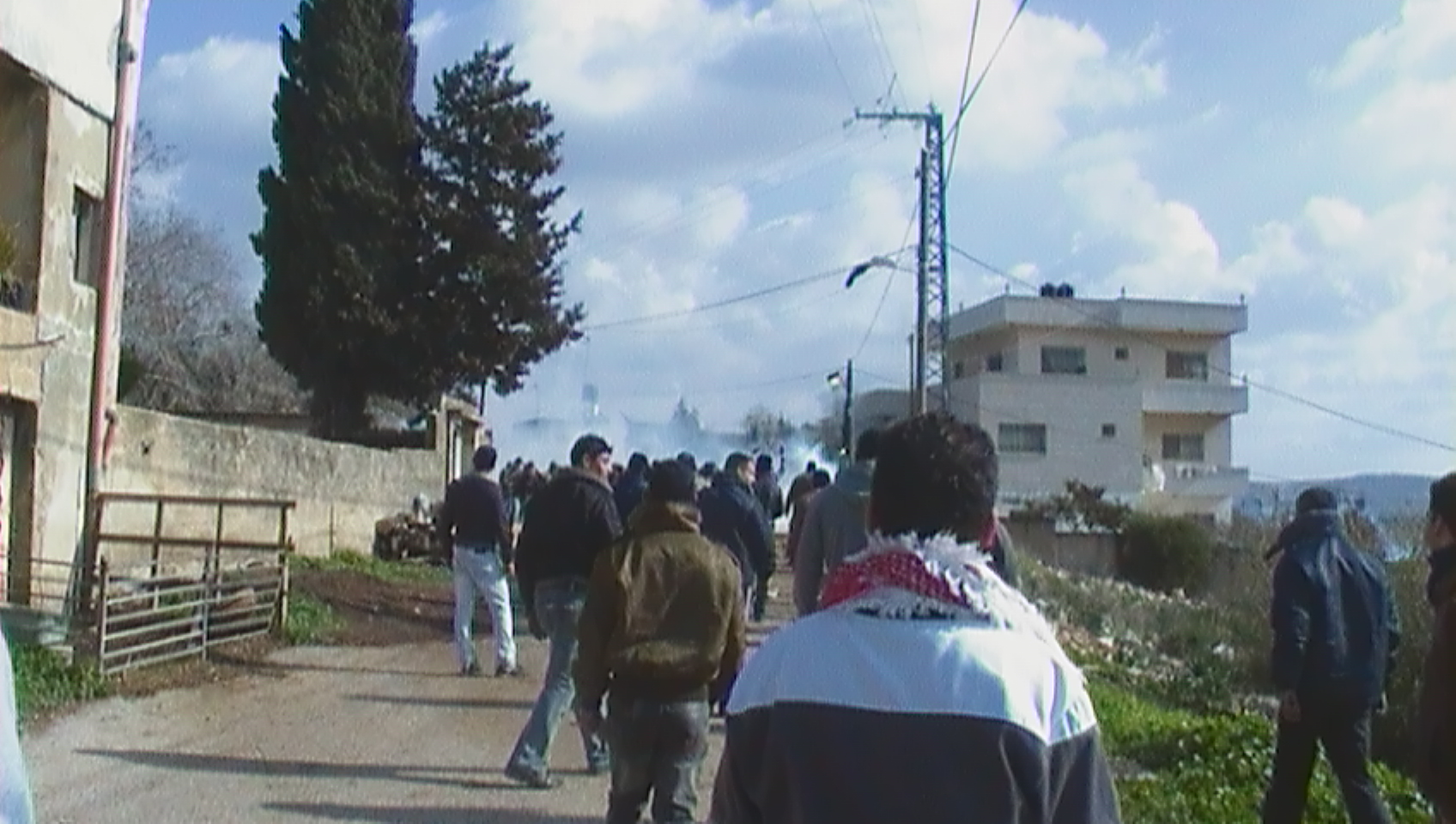Tag: Demonstration
-
Settlers attack demo in Qaryut
10 February 2012 | Popular Struggle Coordination Committee Demonstrators in Qaryout attempted to plant olive trees to resist land grab. On the way, they were attacked by settlers and the army. Approximately 100 residents of the Qaryout joined the weekly protest against the occupation this week, aiming to plant olive trees on their lands, as…
-
13 injured in Nabi Saleh during weekly non-violent protest
3 February 2012 | International Middle East Media Center During the weekly non-violent protest in the village of an-Nabi Saleh on Friday several injuries were reported including that of a French citizen who was struck in the neck by an Israeli projectile. The young woman, reported to be named Amessi, was struck in the neck,…
-
Kufr Qaddoum marches forward despite threats of violence
by Alex 7 January 2012 | International Solidarity Movement, West Bank At noon on the 6th of January, 2012, a demonstration was held in the village Kufr Qaddoum, located just outside Nablus. The people gathered after the Friday-prayer and started marching along the main road that runs through the village. This road was, until the…



